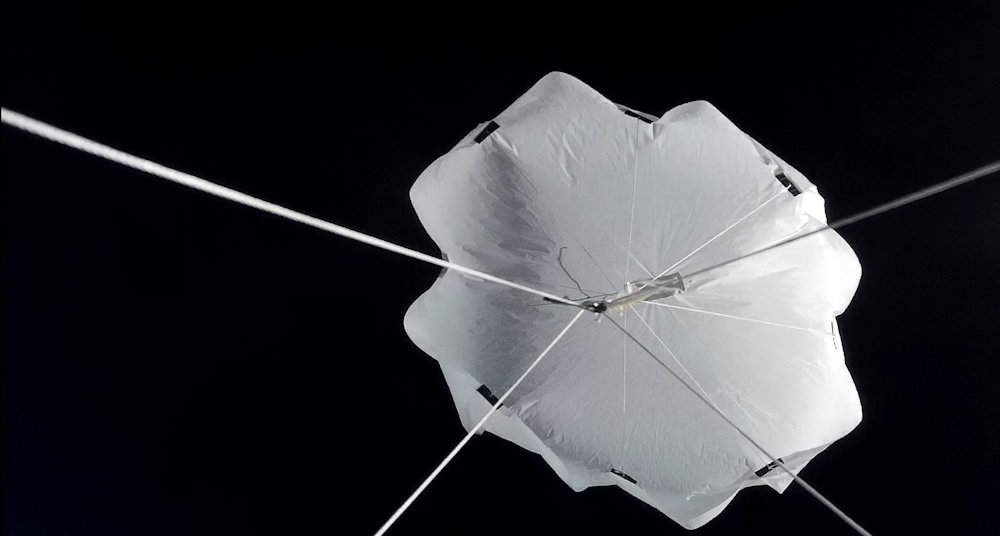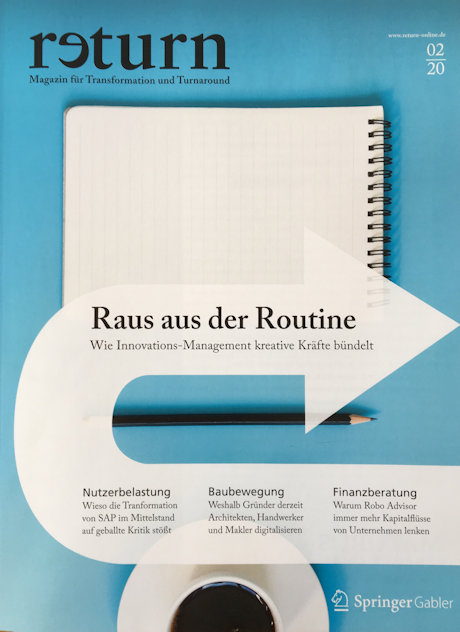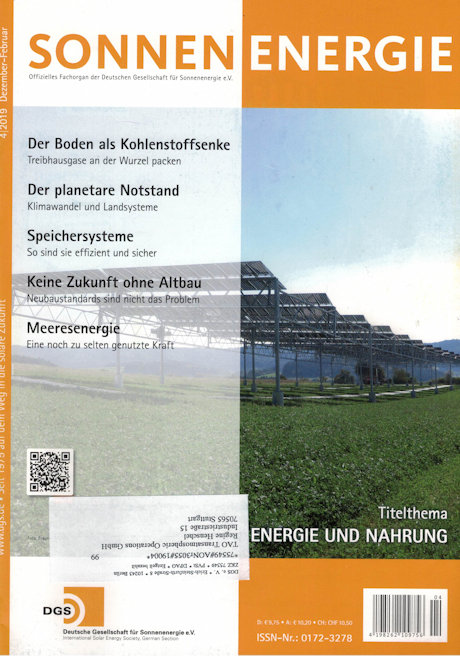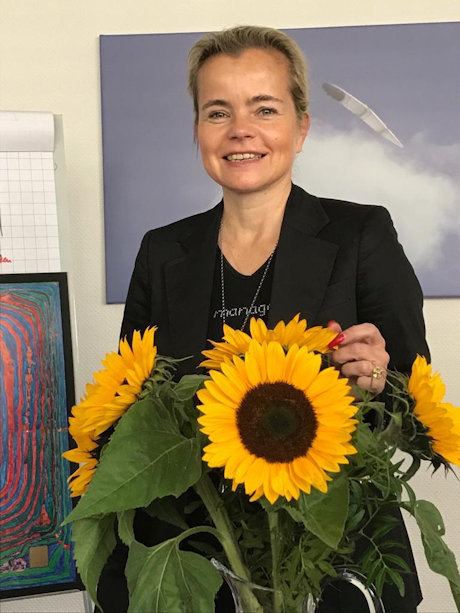Press
Fascinating innovations of the TAO Group had been published in the press. A selection of the press articles and interviews you will find here. More new informations you will find on our website at "Tec-News".
Data transmission from the stratosphere

The suspected Chinese spy balloons over America have brought wind into the lighter-than-air community. Due to the more than high-profile launch of the balloons over the U.S., a broad public is now aware of what the stratosphere is and where it is located. TAO's long-standing R&D work in the area of High Altitude Platforms (HAPs) is now also coming more into focus, which initially led to some recent inquiries on the topic of stratospheric balloons and data transmission operations at altitudes of up to 30 km. What started with the Körber Prize in 1999, which TAO company founder Prof. Dr. Bernd Helmut Kröplin received for the idea of telecommunications from the stratosphere, has now become one of mankind's most coveted challenges: the long-duration flight mission in the stratosphere. Although TAO-HAP is initially intended for disaster relief in areas where telecommunications have temporarily broken down due to earthquakes, tsunamis or hurricanes, long-term missions for telecommunications and data transmission are also possible in the future. "Die Welt" describes here in the article of 12.3.2023 a project in Europe for stratospheric missions, in which TAO is also involved
Innovation management: How ideas fly!

What are the success factors that promote successful innovation management? "Behind significant innovations there is always a desire that is greater than yourself" - and this desire is the inner drive for incredible achievements that are visible on the outside. Extraordinary results require special passion and people who are truly dedicated to their ideas. The TAO awakens this desire in the team with a special innovation management and describes its specific method in the specialist magazine "Return", the magazine for transformation and turnaround from Springer Verlag (issue 2/2020). Read article online.
Conserving resources: The Co2-free summer storage

The dream: a heating system without fossil fuels that heats without loss with the summer sun in winter. This is achieved by the TAO silica gel-based solar storage unit. Surplus energy such as industrial waste heat from biogas plants or restaurants can also be stored for seasonal heating. This article in the trade magazine "Sonnenenergie" (Official organ of the German Solar Energy Society) introduces the TAO adsorption storage tank. The silica gel storage tank was realized among others in the so-called "Polar Bear Building" and tested for five years. (issue 4/2019, December - February) download free of charge
Love gives you wings: Flight pioneer with passion

"Courage is the price that life demands if it is to make peace with you." And courage is building a project for the data transfer and telecommunications of the future from the stratosphere for years to come. In the meantime numerous prototypes of the high altitude platform 'SkyDragon' have been built and several hours of flight and ascent have been realized. This article in "Ecowoman" gives an insight into the innovation of the TAO Group and its spirit.
Lesson from Zeppelins
What can we learn from the past? And which skills do innovative technologies need? The Economic Times, the world's second most widely read English language business newspaper has a useful mention for the SkyDragon-Technology which Prof. Dr. Bernd Kröplin presented at the "Zeppelin View" - the "kick-off-event" of the 7th World Communication Forum in Davos (WCFDavos 2016). Read more in the article.
In: The Economic Times from 31.3.2016
Solar airship Lotte in the Zeppelin museum
The first solar airship "Lotte" had been donated to the Zeppelin museum in Friedrichshafen/Germany. Prof. Dr. Bernd Kröplin gave the solar cells and the propeller in a symbolic ceremonie in presence of Wolfgang von Zeppelin to the director of the museum Claudia Emmert and Jürgen Bleibler. "Lotte" is in the depot now, but the exhibtion will be planned new. More information about our solar airship on our website "Lotte". About the donation of solar airship Lotte to the Zeppelin-Museum in Friedrichshafen several articles had been released, for example: Link to the article.
In: Südkurier from 28.11.2014
Further themes:
- TAO energy storage
- Emergency management
- Autonomous parachute "Alf"
- SkyDragon high altitude platform
On the subject of the “TAO Sorption storage”
The “Icebear-Building” ’s official opening on January 2013 took place in the presence of Franz Untersteller (secretary of environment and energy, regional state of Baden-Württemberg). With innovative solar collectors and a special TAO-Sorption storage is this building a model for energy efficiency construction. The heat will be absorbed throughout the summer in order to be supplied later for the heating period in winter. Further information on our internet pages under ”Icebear-Building” and in the press:
Airy covers for the architecture of the future
Membrane buildings like our ice-bear-buildung are a future trend, not only for temporary buildings. The reasons are their aesthetical characteristics like opaque and translucent materials on the one hand, and their possibilities for energy-efficient constructions with integrated, textile solar collectors and new energy storages like the TAO-sorption-storage.
An article in "Deutsches Architektenblatt" presents the new, trend-setting icebear-building, the new TAO-sorption-storage and also other exciting architectural projects.
Here is the complete article:
link to the article
In: Deutsches Architektenblatt vom 1.8.2013
A new energy saver on the basis of silica gel
A new energy saver on the basis of silica gel could revolutionice the house construction. Instead of a heating room the modern private house constructor has a silica gel-saver in his cellar. Silica gel as silicon dioxide is abundantly available in nature, non-toxic and regenerable. The characteristics of the tiny hygroscopic beads, - publicly known in little sachets from packing material from cameras or a hand bags -, were the ARD important enough for a report in their Nature- and Science program. TAO Trans. GmbH, who develops silica gel-saver, has planned and designed the test set-up, and helped with words and deeds during recording the show.
In: The Great Show about Wonders in Nature, report 11.7.2013 at 20:15 on ARD
Heat storage facility for the future
To Franz Untersteller (secretary of environment and energy, BaWü) this new, state-of-the-art Icebear-Building with its special solar collectors and the new heating storage represents a “pioneer design”.
In: “Stuttgarter Zeitung”, January 15, 2013
The Polar Bear as a Model
The metaphore of the polar bear - black skin absorbing the warmth of the sun underneath the white, isolating fur -, gave this new, state-of-the-art building its name. Deutschlandradio explains the idea in short and brings it to the point: “Polar bear fur as model – new, state-of-the-art long term heat storage facility will be installed in the zero energy house”.
Listen to:
Link
Deutschlandradio
Autark Energie supply
„The innovative storage offers an almost independent supply.”
More under:
Link
In: “Esslinger Zeitung”, January 15, 2013
On the subject “Emergency Management”
An impressive “SkyDragon”
Among other research institutions and companies also the TAO Group with its High Altitude Platform “SkyDragon” participated in the IdeenPark in Essen 2012. Our SkyDragon as an “airship like dragon with a small propulsion” in 20.000 m altitude impressed author Johannes Winterhagen very much. Here you can find the entire report “Little technician – Big technician” with the IdeenPark-supplement 2012:
Link
In: “Frankfurter Allgemeine Sonntagszeitung”, August 20, 2012
HAP in AirWorm-Shape made in Germany
“A German professor has developed a 70-meter-airship, which is able to stay up in the sky for months. (…).These bizarre “air worms” from Germany are supposed to be a sort of flying high altitude relay station for transmitting reports ground for example during natural disasters that destroyed the communicative infrastructure. (…)”
In: “Die Welt” November 7, 2009
Rescue in time of need
Unfortunately, major catastrophes and disasters are part of the history of mankind and cannot be avoided. On the other hand there are many more resources available today that can lessen the effects of a catastrophe. The more we know about the situation in situ, the better we can help. A major earthquake, a conflagration, or a tsunami destroys all devices for communication immediately: telephone lines are disrupted, the mobile phone base and other transmitting facilities are destroyed.
In such a case the High Altitude Platform SkyDragon can help and can take over the communication in a few hours. “Once the Sky Dragon is on site, is it possible to phone via mobile phone again (…)”, explains Prof. Kröplin.
In: “Stuttgarter Nachrichten”, May 15, 2008
Self-Monitoring Aid
If a hurricane wrecks a coastline or an earthquake puts a town to pieces, the rescue squads need new and instant ways of communication and for the care of the injured. The Institute for Static and Dynamic of Aerospace Structures (ISD) develops a scenario for instant emergency management that allows a replacement of destroyed infrastructures in the shortest of time through intelligent ad-hoc-systems. All catastrophes have in common the spontaneous collapse of power supply and the hampered deliveries of aid good due to destroyed traffic routes. Also electric and water supply are disrupted in many cases. For this scenario the project “Emergency management” of the ISD offers several partial steps. One is the erection of an emergency system for telecommunication that enables the people to use their phones as fast as possible. Here comes into operation the High Altitude Platform from Stuttgart, rewarded with the “Körber-Award for European Science” in 1999.
In: “Highlights der Forschung”, Stuttgarter Unikurier, Issue Nr. 100, February 2007, page 79
On The Subject Autonomous Parachute “ALF”
Automatic-Control: Parachute brings humanitarian aid directly to the target
In: “P.M.” – Welt des Wissens, Issue April 2004
Emergency supply - A Robot on a Parachute
“Humanitarian goods as remedies, aliments, tents, and blankets touch down precisely within few meters when they are transported by a dirigible parachute. So far there is a loss of 30% of the goods, because gusty winds taking them off course or due to the fact the goods will not be found in pathless terrain (…). The shield is dirigible by navigation ropes that change the curvature of the shield. What normally a human pilot does, is done here by the electrical motors of the dirigible parachute. The control system takes focus on the target with the assistance of satellite navigation and compass on board. (…)”
In: “Wirtschaftswoche”, Issue Nr. 41, October 2, 2003, page 102.
Precisely Focusing Parachute – Techniques
Scientists from the University Stuttgart developed a dirigible parachute, which is supposed to unload humanitarian goods in a conflict area autonomously and directly. The parachute was primarily developed as a “Rescue-System” for the mobile communication system in order to save supposedly defect High Altitude Platforms in 20000 meters altitude. So far a third of the cargo of an auxiliary transport was blown off target by gusty winds or could not be found in rough terrain. ”Humanitarian goods, which are dropped off by a cargo plane, land safely and precisely within four square meters with the new shield,” explains Professor Bernd Kröplin. (dpa)
In: “Welt am Sonntag”, August 14, 2003
On the Subject High Altitude Platfom (HAP)
”The Institute for Static and Dynamic for Aerospace Structures (ISD) at the University Stuttgart is leading in the technology of High Altitude Platforms,” explained the attending delegations from China and Singapore in Stuttgart. The article continues further: „With this platform in 20 km altitude in the stratosphere the supply for mobile funk of a large city can be secured. This technology is not only less expensive but also minor in radiation because the zone ranges that usually are located close to antenna poles are omitted. This technology is therefore ideal for the big cities in China (…). An appropriate financial support for a realization in China seems supposedly provided, so it is said. Of greater interest for the Chinese therefore are the already flying prototypes from Stuttgart (…) Since Bernd Kröplins idea of the Altitude Platform got rewarded with the Körberpreis in 1999, the Institute in Stuttgart is doing research on this stratosphere aircraft (…)”
In: “Stuttgarter Unikurier”, Issue 2/2006
”Internationally, we currently have an advantage of 4 years on our HAP-Project. This development in Germany we do not like to lose to other institutions abroad,” plans Prof. Kröplin (…) A cooperation with the Asian market is not impossible, particularly the Chinese show affection for the SkyWorm – not only because he resembles their dragon, which brings good luck (…)
In: ”ComputerArt”, Issue 2006, October 2005
“The altitude air ships are supposed to stay in the stratosphere for month if not years”, explains Prof. Kröplin the mission of the High Altitude Platform. Currently a system is in favor, which by day generates electricity from solar cells and by night provides this for the propulsion engines. The position of the unmanned high altitude platform should be kept autonomously against gusty winds. “In order to solve some of these problems we have constructed the concept of an air-worm,” says Kröplin (…)
In: “Züricher Zeitung”, June 13, 2004
“The relay stations, positioned in 20 km altitude, should connect the WLAN-„Hot-Spots“ with satellites and should crosslink them worldwide (…)” This can be the future of mobile communications provided by high altitude platforms.
In: “Bild der Wissenschaft”, Issue 12/03, December 2003
The infrastructure for the mobile telecommunications of the future needs to be enlarged. The discussion about more antennas is controversial. Satellites fly to high. “Therefore it makes sense to seek a solution in midstream to some extent,” plans Prof. Dr. Bernd Kröplin. And indeed he and his team of scientists found a solution: the high altitude platform in 20000m. When the entire infrastructure on the ground - antenna poles and cabling – is omitted the technique of the high altitude platform (HAP) is approx. more reasonably about the factor 100.
In: “Süddeutsche Zeitung”, April 22, 2003
“At mayor events like trade fairs or Olympic Games (…) the high altitude platforms could relieve the communication network (…)”, explains Prof. Dr. Kröplin.
In: “Stuttgarter Zeitung”, November 21, 2002
An air ship as a High Altitude Platform has also several advantages over satellites. “The platform can land again and can be maintained or improved (...)”, explains Prof. Dr. Kröplin. An airship generates no space debris. And high altitude platforms are not as expensive as satellites.
In: “Financial Times Deutschland”, July 19, 2001
